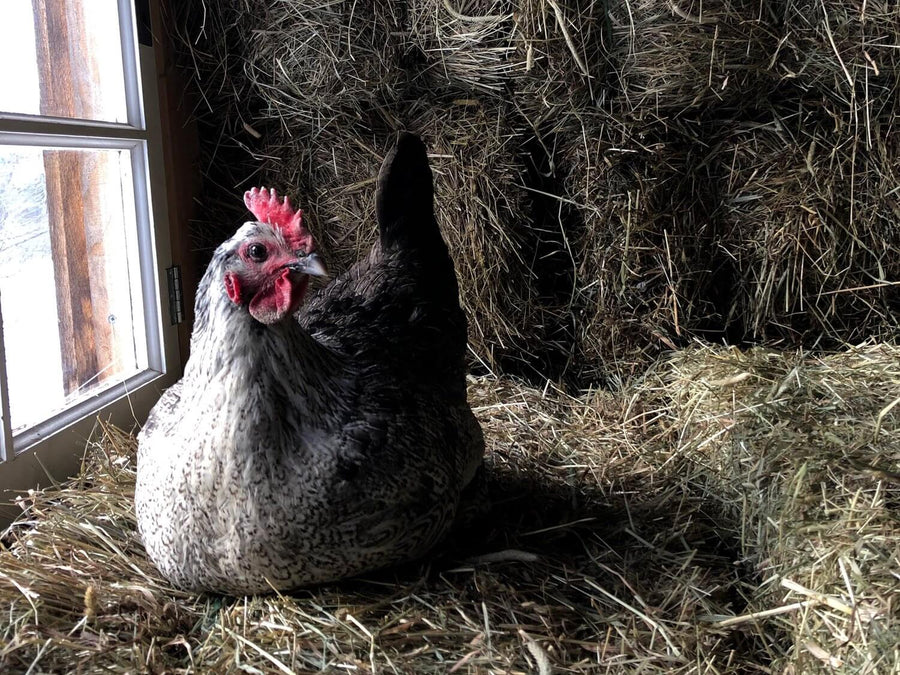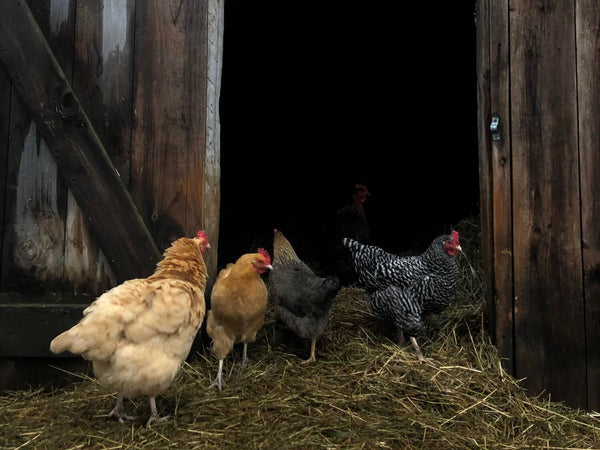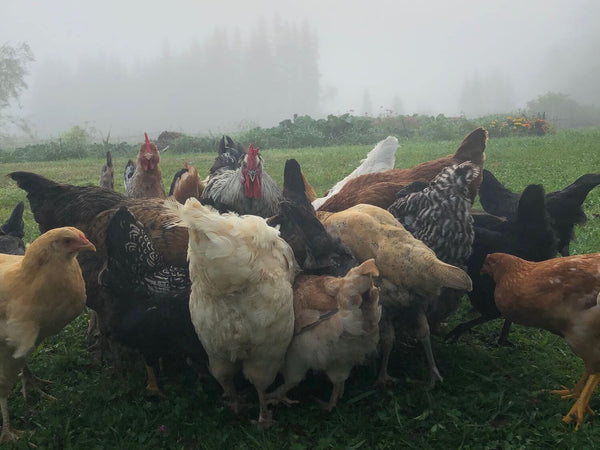
 Once your hens have a coop that's safe, dry, and comfortable, you can turn your attention to the amenities you plan on offering them.
Once your hens have a coop that's safe, dry, and comfortable, you can turn your attention to the amenities you plan on offering them.
Chicken feed
Food and water are the essentials, but if your flock only spends nighttime in the coop, it isn't necessary to keep their feed and water source inside. Keeping it in their run frees up space in the coop, where they'll spend most of their time asleep anyway. Regardless, both food and fresh water must be available to them during the day.
Pellets vs. crumble
The organic layer pellets and organic layer crumble available at most feed supply stores and online contain the basic nutritional makeup that most chickens need. Deciding between pellets or crumble comes down to personal preference. One may be cheaper than the other at your local feed store, and that might help influence your decision. In general, pellets tend to yield less food waste, and that's another factor to consider. No matter what you choose, any organic feed specifically designed for layers will provide the correct percentage of protein and minerals your hens require. A high quality organic feed is especially important when hens have limited access to fresh forage and bugs, whether due to space restrictions, snow, or drought. To eliminate waste, use a larger version of a chick feeder to discourage the hens from scratching the feed all over the ground and eating only a small fraction of it.

Water source
Water must be available to your flock every day and changed just as often. Avoid using bowls, as drowning is still a potential with grown hens. A few things to keep in mind: algae will quickly build up in summer months, and hens somehow manage to poop in their water source at least once a day, making it imperative to refresh their water often.
Heated waterers
Depending on your climate, the arrival of winter might warrant the purchase of a heated waterer. A heated waterer eliminates the need for you to break the ice each morning and watch your waterer slowly become misshapen from the constant freeze and thaw. This option will require installing a power source in your coop.

Warmth and protection from the elements
Depending on the climate of your home state, you may want to consider a heat lamp or light for your hens. A heat lamp will help them keep warm, but is not strictly necessary if you have young, healthy, fully feathered hens in an insulated coop. The light serves a different purpose: it will stretch out their lay, as chickens naturally molt and pause when days become shorter in winter. If your egg needs aren't particularly high, it's worth skipping the light and letting your hens go through their natural cycle without interference. Either way, remember that both lights and heat lamps require a significant amount of energy and create an intense heat source, meaning higher electric bills and the potential for fire.
Solar alternatives
If you live in an area with cold, dark winters and need a reliable heat source, consider passive solar options to keep the hens warm and bathed in any available daylight. Relatively inexpensive options like swapping tin coop roofs for corrugated plastic can help achieve the latter, while building your coop with insulated walls on a warm, protected, and well-lit site can help with the former.

Social behaviors
As your hens grow and acclimate to their new home, you may notice one of them getting henpecked, which results in bare patches on her shoulders, head, neck, or tail. In the first flock of hens we ever cared for, we had one such hen. We named her Charlie and took her into the house to give her some rest and care. What we didn't realize? The hens were bored (it was winter) and there was too much competition for food and water. In a case like this, it's important to troubleshoot. For example, adding an additional spot for feed and water at least 5-10 feet away from the other one can help lessen competition, lighten the bullying, and ensure that no hen is without sufficient food and water.

Tools and accessories for your coop
The beauty of keeping hens is the short list of tools and accessories that egg farming requires. They don't need much; just sunshine, food, water, and love. Of course, as with any American hobby, there's the opportunity to go down a rabbit hole of consumption by purchasing egg-patterned aprons, chicken-printed sweaters, special egg collecting baskets, and the like, but the truth is that hens are quite modest creatures don't need many accessories. Having raised many flocks of my own, I recommend taking advantage of your new low-maintenance plot-mates by spending more on fewer things, such as high quality feed and fruit trees that will rain down tasty apples and peaches within reach of your flock.
Concerned about predators? Read on to learn everything you need to know about keeping your flock safe.
A note from Pete & Gerry's: For generations, our family of farmers at Pete & Gerry's Organic Eggs has been dedicated to revolutionizing the way eggs are produced in the United States. We believe that consumers deserve better eggs from happier chickens living on small farms run by fairly paid farmers, and that's what we have dedicated our business to. We also believe deeply in the transparency and verification of our standards, which is why we became a Certified B Corporation in 2013. It's also why our farms meet the rigorous Certified Humane Free Range and USDA Certified Organic standards. We take the welfare of our hens, the sustainability of our farms, and health and happiness of our partner farmers and consumers very seriously. The resulting eggs are ones that stand out in the supermarket; they remind consumers of the eggs from their childhood farms and excursions abroad in Europe. And we're happy to be second best. In fact, we believe that everyone deserves a chance to raise hens right in their backyard and experience the joys that come with raising and growing food at home. Kate MacLean of Longest Acres Farm is here to tell you how.

Kate MacLean lives and works on 120 acres of land known as Longest Acres Farm in Chelsea, VT with her husband Nick, son Leland, and daughter Amelia. As an ex-city-dweller, she gained valuable experience working on friends' and neighbors' farms before making the move to rural Vermont with her family in search of a fulfilling, self-sustaining way of life.
Her breadth of experience in farming and raising countless varieties of chickens and other livestock on Longest Acres Farm not only makes Kate an expert in her field, but an advocate for home grown food and self-sustainability.










